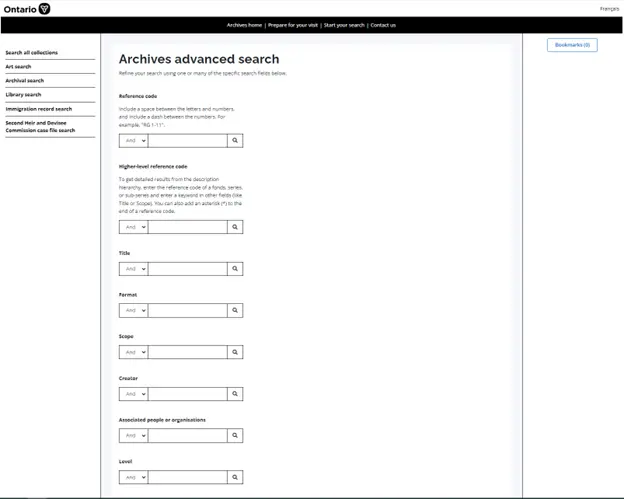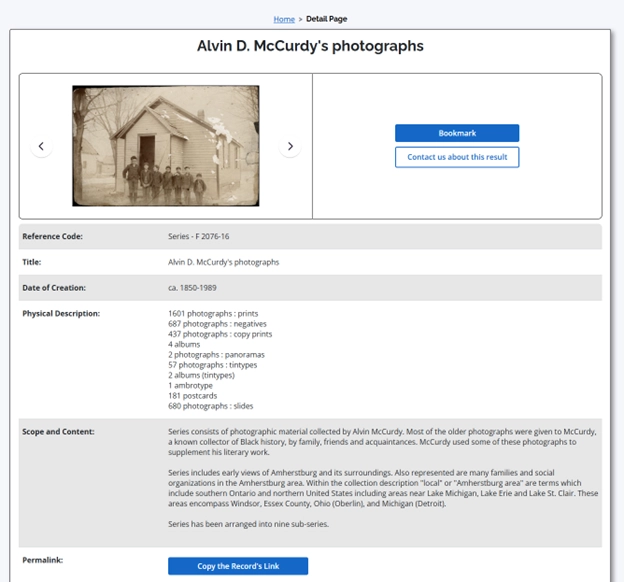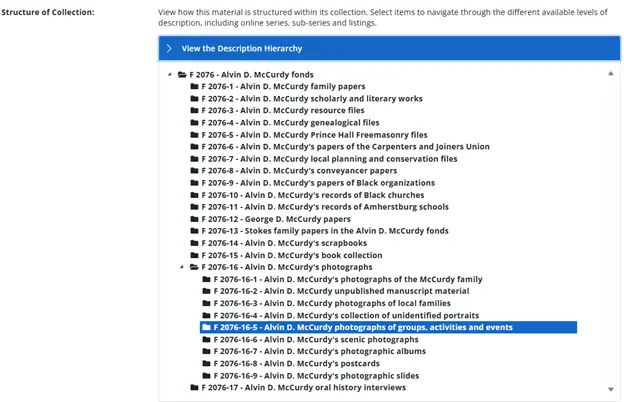Search by collection
Our Collection Search is called AIMS.
It contains descriptions for most items in our three collections:
It also has search options for two databases created from archival series:
- immigration records 1865-1883
- property claims 1804-1895
For the most accurate results, we recommend searching one collection at a time.
Search the archival collection by:
- keyword (person, place, activity or ministry)
- reference code
Search the library collection by:
- keyword (subject, person, place, activity, ministry)
- author
Search the art collection by:
- title of work
- artist
- accession number (AC)
When to use archival advanced search
Archival advanced search allows you to limit your keyword search to specific fonds or series.
You need to know the reference code for the series you want to search (F, C or RG number).
Enter the fonds or series-level reference code into the “Higher-level reference code” field. Add an asterisk (*) to the end of the code to search all series, subseries and files that start with the code.

Enter keywords into the “Scope” field to search for your keywords in the whole record description.
Use the “Title” field if you only want to search the titles of series, subseries or files.
Add other parameters to narrow your search.
What an archival description tells you
Archival descriptions contain important information about the records in a fonds, series or subseries, including:
- title
- reference code
- date range
- physical description (photos, textual documents, maps, films)
- subjects in a fonds, series, subseries or file
- biographical or background information
- whether a finding aid is available
- access options
- location and ordering information

Use record descriptions to help you search
Record descriptions are the key source of information about our archival records. Besides providing you with details required for ordering, they tell you:
- what information a series, sub-series, file or item contains
- the physical format of the records (i.e., textual records, photos, maps, etc.)
- how the records you are looking at relate to the rest of the record group or fonds to which it belongs
Use the “View the Description Hierarchy” tool to see the structure of a record group or fonds. Select lower series and files to get to their descriptions.

Navigating by description hierarchy is a great way to find records that are similar to the one you are looking at, such as photos.
It also gives you a bigger picture about the activities of a given ministry, if you are looking at a government record series.
Learn about potentially harmful content in our record descriptions.
What other descriptions tell you
Library descriptions contain a title, author, publication date, call number and sometimes other access or publication information.
Art descriptions contain a title, artist name, date and accession number (a unique number assigned to each piece in our collection).

